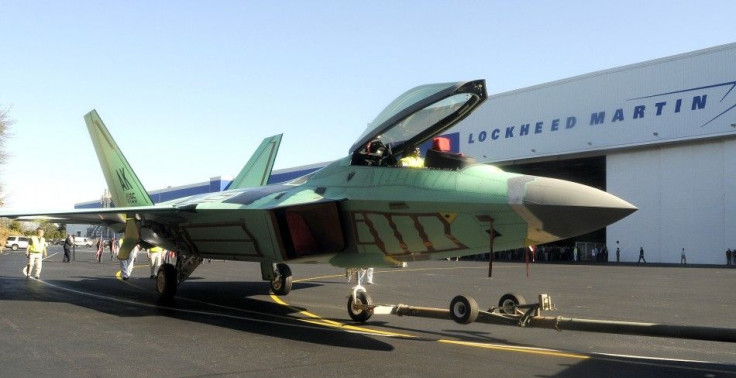Last Of The Raptors: Lockheed Delivers Final F-22, As Pilots Refuse To Fly It

More than twenty years after its development began, seven years after entering service, and with the biggest price tag ever, the most advanced warplane in the United States' arsenal is at the end of the line. Lockheed Martin (NYSE: LMT) delivered on Wednesday the last F-22 Raptor jet fighter to the U.S. Air Force, in a ceremony at its plant in Marietta, Georgia.
The last Raptor will become part of the fleet of 187 operational F-22s stationed at several bases around the U.S., plus eight more test aircraft.
The stealthy airplane, almost invisible to enemy radar, is also the most expensive fighter ever made, at more than $400 million per plane. That's because the Pentagon will need to spend $11.7 billion to upgrade the fleet, after shelling out $67.3 billion to purchase it. Divided by 195 planes, that gives a unit cost of $405 million, according to figures released by the Government Accountability Office on the same day the last Raptor was delivered.
The costs were so staggering that canceling the order for more Raptors was the first big military procurement decision that the Obama administration made, in 2009, freezing the Air Force's plans to buy hundreds more.
But cost is not the reason the F-22 has been in the news lately. The Raptor is being talked about these days because its pilots are refusing to fly it.
The unprecedented event isn't, to be sure, an officer revolt. Still, the Air Force's Air Combat Command has admitted that some pilots, "a very small number" according to ACC commander Gen. Mike Hostage, have asked to be reassigned from the F-22 because of hypoxia, a lack of oxygen that causes dizziness and may have been the cause of a 2010 crash that killed a pilot.
In the wake of that accident, the entire fleet of Raptors was grounded for four months while an investigation was under way. Last September the planes were cleared to fly again, with some restrictions, after an inquiry could not pinpoint the cause of at least a dozen reported hypoxia incidents.
Since September, there have been more than 12,000 Raptor flights and 11 reported cases of hypoxia, according to the Air Force Times. ProPublica reported that technicians from both the Air Force and outside companies are monitoring the planes for possible hypoxia problems, but that no root cause has been found.
The oxygen problems are only a part of the reason for the fact that, unlike every other warplane in America's current arsenal, the F-22 has never been used in combat, despite having been in service since 2005.
The Raptor was notably missing from action over Libya last year, when the U.S. Air Force sent all of its other fighter jets to the region but decided to keep its latest machine home in the States.
The official explanation was that America and its allies did not need the F-22's advanced capabilities to keep at bay the obsolete and poorly trained Libyan Air Force, which never sent a single fighter plane up during the whole campaign. As for hitting Ghadafi's tanks, that wasn't a job for the Raptors, which can be used only in air-to-air combat -- and are only now beginning to be upgraded with the air-to-ground capabilities that would allow them to exploit fully their ability to penetrate an enemy's airspace unseen.
The Raptor may get a chance to prove its worth if hostilities break out with Iran. The Pentagon has moved some of them closer to the Persian Gulf: The United States Air Force has deployed F-22s to Southwest Asia, an official USAF statement said, without specifying where exactly that is.
According to military aviation blog The Aviationist, the place is Al Dhafra, in the United Arab Emirates, where six F-22s are now stationed within a stone's throw of Iran. But because those six planes are not equipped to drop bombs, they wouldn't be able to hit the nuclear facilities that are the focus of the current confrontation between Iran and the international community. They would be limited to patrolling the skies, and fending off any attempt by Iranian Air Force fighters to shoot down an attacking force.
Wired Magazine's Danger Room blog, focusing on military affairs, reported in March that the lack of air-to-ground capabilities, as well as of the ability to talk to other aircraft through data links, made the Raptor a lesser-capable plane than the earlier F-15 and F-16.
Yet General Hostage, the head of the Air Combat Command, doesn't think he's got on his hands the world's most expensive lemon. Defending the decision to send the Raptor to Southwest Asia despite its problems, he told a press briefing on Monday that "I wish I had ten times as many. It's our best airplane".
© Copyright IBTimes 2025. All rights reserved.





















